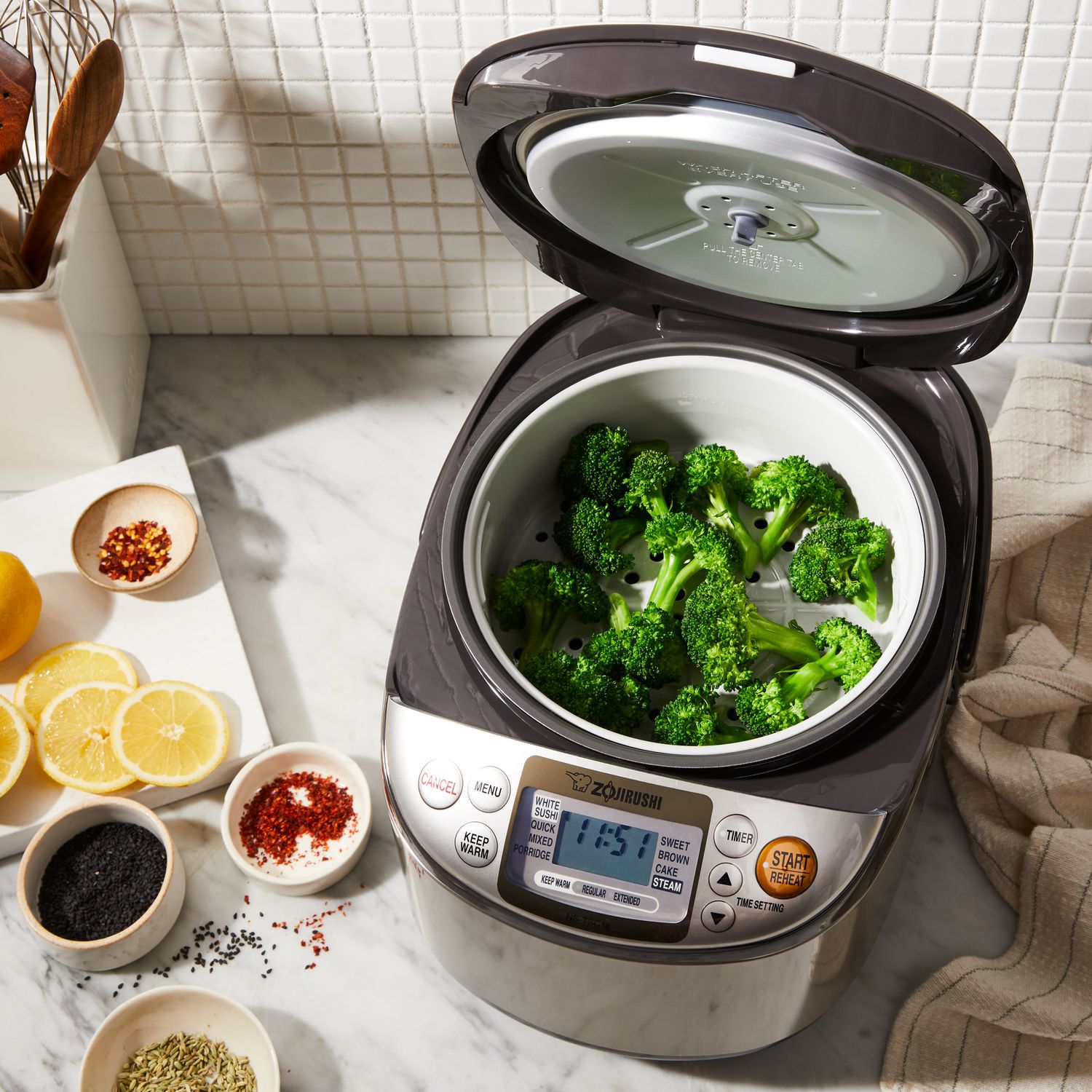

Articles
How To Use Rice Cooker As A Steamer
Modified: August 27, 2024
Discover how to use a rice cooker as a steamer with our informative articles. Step-by-step instructions and helpful tips to elevate your cooking skills.
(Many of the links in this article redirect to a specific reviewed product. Your purchase of these products through affiliate links helps to generate commission for Storables.com, at no extra cost. Learn more)
Introduction
The rice cooker is a versatile kitchen appliance that is typically used to cook perfect rice every time. However, did you know that you can also use a rice cooker as a steamer? Yes, you heard it right! With a few simple steps, you can transform your rice cooker into a steaming powerhouse, allowing you to prepare a variety of healthy and delicious steamed dishes.
Steaming is a cooking method that preserves the nutrients, flavors, and textures of the food, making it a popular choice for health-conscious individuals. Steaming also requires minimal oil, making it a great option for those watching their calorie intake. Whether you want to steam vegetables, fish, meat, or even dumplings, using a rice cooker as a steamer is a convenient and efficient way to achieve great results.
In this article, we will explore the benefits of using a rice cooker as a steamer, how to choose the right rice cooker for steaming, and provide step-by-step instructions for steaming various types of food. Additionally, we will share some tips for successful steaming and provide guidance on cleaning and maintaining your rice cooker.
So, if you’re ready to elevate your cooking skills and explore the world of steaming with a rice cooker, let’s dive in and discover the wonderful possibilities that await!
Key Takeaways:
- Elevate your cooking skills by using a rice cooker as a steamer to create healthy, flavorful, and nutrient-rich dishes with minimal effort and maximum convenience.
- Enjoy the versatility and health benefits of steaming with a rice cooker, from perfectly cooked vegetables and tender fish to juicy meats and delectable dumplings.
Read also: 9 Superior Rice Cooker/Steamer For 2025
Benefits of Using a Rice Cooker as a Steamer
Using a rice cooker as a steamer offers several advantages that make it an attractive option for cooking healthy and flavorful meals. Here are some of the key benefits:
- Versatility: A rice cooker can be a versatile addition to your kitchen. Not only can it be used to cook perfectly fluffy rice, but it can also serve as a reliable steamer. This means that with one appliance, you can prepare a wide range of dishes, from steamed vegetables to seafood and even steamed buns.
- Nutrient Retention: Steaming is widely regarded as one of the healthiest cooking methods as it helps retain the nutrients in the food. Unlike boiling or frying, steaming minimizes nutrient loss, ensuring that you enjoy the full benefits of the ingredients you are cooking.
- Healthy Cooking: Steaming requires little to no added oil, making it a healthier alternative to frying. By using a rice cooker as a steamer, you can easily incorporate more healthy steamed dishes into your diet. It’s a simple way to reduce your calorie and fat intake without compromising on taste.
- Quick and Convenient: Rice cookers are designed to be user-friendly and time-efficient. Steaming with a rice cooker is no exception. Once you set up the ingredients and start the cooking process, the rice cooker takes care of the rest. This frees you up to focus on other tasks in the kitchen or take a moment to relax.
- Consistent Results: Rice cookers are equipped with precise temperature and timing controls, ensuring consistent and even steaming. This eliminates the guesswork and allows you to achieve perfectly steamed food every time you use your rice cooker as a steamer.
Now that we’ve explored the benefits of turning your rice cooker into a steamer, let’s move on to the next step: choosing the right rice cooker for steaming purposes.
Choosing the Right Rice Cooker
When it comes to using a rice cooker as a steamer, not all rice cookers are created equal. To ensure successful steaming, it’s important to choose a rice cooker that has the necessary features for steaming. Here are some factors to consider when selecting a rice cooker for steaming:
- Capacity: Consider the size of the rice cooker and its capacity. The size should be appropriate for the amount of food you intend to steam. If you plan to steam large quantities or larger items like whole fish, you may require a larger rice cooker with a larger capacity.
- Steamer Basket: Look for a rice cooker that comes with a steamer basket or tray. This component is essential for holding the food while it steams. The steamer basket should be made of high-quality, food-grade materials and have sufficient depth to accommodate the ingredients without overcrowding.
- Timer and Controls: Opt for a rice cooker with a timer and adjustable controls. This allows you to set the cooking time and tailor the steaming process to match the requirements of the ingredients you are cooking. Some rice cookers even have preset steaming functions for added convenience.
- Keep Warm Function: A keep warm function is a useful feature to have, as it allows you to keep the steamed food warm and ready to serve for extended periods. This is especially handy if you’re preparing multiple dishes or need to wait for other components of the meal to be ready.
- Easy Cleaning: Consider the ease of cleaning when choosing a rice cooker. Look for models with removable steamers or non-stick surfaces, as these make the cleaning process much simpler. Some rice cookers even have dishwasher-safe components, which can further streamline the cleaning process.
By keeping these factors in mind, you can select a rice cooker that meets your steaming needs and ensures hassle-free and efficient cooking. Once you have your rice cooker ready, it’s time to prepare it for steaming.
Preparing Your Rice Cooker for Steaming
Before you begin steaming with your rice cooker, it’s important to properly prepare the appliance to ensure optimal results. Here’s a step-by-step guide on how to prepare your rice cooker for steaming:
- Clean the Rice Cooker: Make sure that your rice cooker is clean and free from any residue or debris. Refer to the manufacturer’s instructions on how to clean your rice cooker properly. A clean rice cooker ensures that your steamed dishes are not affected by any lingering flavors or odors.
- Add Water: Fill the inner pot of the rice cooker with the appropriate amount of water. The amount of water needed will depend on the specific rice cooker model and the amount of food you plan to steam. Consult the user manual for the recommended water levels.
- Insert the Steamer Basket: If your rice cooker came with a steamer basket or tray, insert it into the inner pot, making sure it sits securely. The steamer basket is where you will place your ingredients for steaming.
- Preheat the Rice Cooker: Close the lid of the rice cooker and turn it on to preheat. Allow the rice cooker to preheat for a few minutes to ensure that the water is heated to the desired temperature for steaming. This step helps to ensure even and efficient steaming.
Once your rice cooker is properly prepared, you’re ready to start steaming a variety of delicious dishes. In the next sections, we will explore the step-by-step process of steaming different types of food, including vegetables, fish, meat, and even dumplings or buns.
Steaming Vegetables in a Rice Cooker
Steaming vegetables in a rice cooker is a simple and healthy way to retain their natural flavors and nutrients. Here’s a step-by-step guide on how to steam vegetables using your rice cooker:
- Preparation: Wash and chop the vegetables of your choice. Cut them into uniform sizes to ensure even cooking. Popular choices for steaming include broccoli, carrots, cauliflower, asparagus, green beans, and zucchini.
- Add Water: Fill the inner pot of the rice cooker with the appropriate amount of water. Refer to the manufacturer’s instructions for the recommended water level. The water should be below the steamer basket or tray to avoid submerging the vegetables.
- Place the Vegetables: Arrange the chopped vegetables in the steamer basket or tray, ensuring that they are spread out evenly and not overcrowded. Overcrowding can result in uneven cooking.
- Start Steaming: Close the lid of the rice cooker and turn it on. Set the timer according to the recommended cooking times for the specific vegetables you are steaming. Generally, most vegetables will be tender within 5-15 minutes of steaming, depending on their thickness and desired doneness.
- Check for Doneness: After the recommended cooking time, carefully open the lid and check the doneness of the vegetables. They should be tender yet still retain their vibrant color and crispness. If they require additional cooking, simply close the lid and continue steaming for a few more minutes.
- Serve and Enjoy: Once the vegetables are cooked to your liking, carefully remove the steamer basket or tray from the rice cooker. Transfer the steamed vegetables to a serving dish and season with your preferred seasonings, such as salt, pepper, or a drizzle of olive oil. Serve hot and enjoy the healthy and flavorful goodness.
Remember to adjust the steaming times based on your personal preference for vegetable tenderness. Steaming is a versatile method, allowing you to customize the level of doneness to suit your taste buds. With your rice cooker as a steamer, you can create a variety of delicious and nutritious steamed vegetable dishes with ease.
Steaming Fish or Seafood in a Rice Cooker
Steaming fish or seafood in a rice cooker is a wonderful way to retain their delicate flavors and textures. Here’s a step-by-step guide on how to steam fish or seafood using your rice cooker:
- Preparation: Clean and prepare the fish or seafood of your choice. You can use whole fish, fillets, shrimp, scallops, or any other seafood you prefer. Season the fish or seafood with salt, pepper, herbs, or marinades according to your taste.
- Add Water: Fill the inner pot of the rice cooker with the appropriate amount of water. Refer to the manufacturer’s instructions for the recommended water level. The water should be below the steamer basket or tray to prevent the fish or seafood from being submerged.
- Place the Fish or Seafood: Arrange the seasoned fish or seafood on the steamer basket or tray. Make sure they are placed in a single layer and not overcrowded to ensure even cooking.
- Start Steaming: Close the lid of the rice cooker and turn it on. Set the timer based on the thickness and type of fish or seafood you are steaming. As a general guideline, steam fish fillets for about 8-10 minutes per inch of thickness, while whole fish may take longer.
- Check for Doneness: After the recommended cooking time, carefully open the lid and check the doneness of the fish or seafood. The flesh should be opaque and easily flake with a fork. If it’s not fully cooked, simply close the lid and continue steaming for a few more minutes.
- Serve and Enjoy: Once the fish or seafood is cooked to perfection, carefully remove the steamer basket or tray from the rice cooker. Transfer the steamed fish or seafood to a serving dish and garnish with fresh herbs, lemon wedges, or your favorite sauce. Serve hot and savor the succulent and flavorful results.
Steaming fish or seafood in a rice cooker allows you to enjoy their natural sweetness and tenderness without the need for excessive oil or fats. The gentle steam cooking method creates moist and delicious results that are both healthy and satisfying.
When using a rice cooker as a steamer, make sure to place the steaming basket or tray above the water level to prevent the food from getting soggy. Also, check the cooking time for the specific food you are steaming to avoid overcooking.
Steaming Meat or Poultry in a Rice Cooker
Steaming meat or poultry in a rice cooker is a fantastic way to achieve juicy and tender results while keeping the flavors intact. Here’s a step-by-step guide on how to steam meat or poultry using your rice cooker:
- Preparation: Clean and prepare the meat or poultry of your choice. You can use chicken breasts, pork chops, beef cuts, or any other meat you prefer. Season the meat or poultry with salt, pepper, herbs, spices, or marinades according to your flavor preference.
- Add Water: Fill the inner pot of the rice cooker with the appropriate amount of water. Refer to the manufacturer’s instructions for the recommended water level. The water should be below the steamer basket or tray to prevent the meat or poultry from being submerged.
- Place the Meat or Poultry: Arrange the seasoned meat or poultry on the steamer basket or tray. Make sure they are placed in a single layer and not overcrowded to ensure even cooking.
- Start Steaming: Close the lid of the rice cooker and turn it on. Set the timer based on the thickness and type of meat or poultry you are steaming. As a general guideline, steam chicken breasts or pork chops for about 15-20 minutes, while thicker cuts of beef may require longer cooking times.
- Check for Doneness: After the recommended cooking time, carefully open the lid and check the internal temperature of the meat or poultry using a meat thermometer. The safe internal temperature for chicken is 165°F (74°C), while pork and beef should reach 145°F (63°C) for medium doneness. If it’s not fully cooked, simply close the lid and continue steaming for a few more minutes.
- Serve and Enjoy: Once the meat or poultry is cooked to your desired level of doneness, carefully remove the steamer basket or tray from the rice cooker. Let the meat rest for a few minutes before slicing or serving. Enjoy the moist, succulent, and well-seasoned results of your steamed meat or poultry.
Steaming meat or poultry in a rice cooker helps to lock in the natural juices, resulting in tender and flavorful dishes. It’s a healthy cooking method that reduces the need for added fats and oils while still delivering delicious and satisfying meals.
Steaming Dumplings or Buns in a Rice Cooker
Using a rice cooker to steam dumplings or buns can yield perfectly cooked, soft, and delicious results. Here’s a step-by-step guide on how to steam dumplings or buns using your rice cooker:
- Preparation: If you are making homemade dumplings or buns, prepare the dough and fillings according to your recipe. If using store-bought dumplings or buns, you can skip this step.
- Add Water: Fill the inner pot of the rice cooker with the appropriate amount of water. Refer to the manufacturer’s instructions for the recommended water level. The water should be below the steamer basket or tray to prevent the dumplings or buns from becoming soggy.
- Place the Dumplings or Buns: Arrange the dumplings or buns on the steamer basket or tray, making sure they are spaced apart to prevent sticking. You can use parchment paper or cabbage leaves as a liner on the bottom of the steamer to keep them from sticking to the tray.
- Start Steaming: Close the lid of the rice cooker and turn it on. Set the timer based on the size and type of dumplings or buns you are steaming. As a general guideline, steam small dumplings for about 10-12 minutes, and larger buns for 15-20 minutes. The dough should be cooked through and the fillings should be hot and flavorful.
- Check for Doneness: After the recommended cooking time, carefully open the lid and check the doneness of the dumplings or buns. The dough should be springy and fully cooked, and the fillings should be piping hot. If they require additional cooking, simply close the lid and steam for a few more minutes.
- Serve and Enjoy: Once the dumplings or buns are cooked, carefully remove the steamer basket or tray from the rice cooker. Transfer them to a serving plate and serve hot with your favorite dipping sauce. Enjoy the delectable and comforting taste of freshly steamed dumplings or buns.
Steaming dumplings or buns in a rice cooker not only ensures even cooking, but it also allows the flavors to meld together beautifully. The result is tender dough and mouthwatering fillings that are sure to impress your family and guests.
Tips for Successful Steaming with a Rice Cooker
To ensure successful steaming with your rice cooker, here are some helpful tips that will help you achieve excellent results:
- Properly prepare your ingredients: Ensure that your vegetables or meats are properly cleaned, chopped, and seasoned before placing them in the steamer basket or tray. This will enhance the flavors and ensure even cooking.
- Do not overcrowd the steamer basket: Overcrowding the steamer basket can result in uneven cooking. Leave enough space between the ingredients to allow the steam to circulate and cook them properly.
- Adjust steaming time based on thickness: Thicker cuts of meat or larger vegetables may require longer steaming times. Keep an eye on the texture and doneness of the food and adjust the steaming time accordingly.
- Use a clean and dry rice cooker: Ensure that the rice cooker is clean and free from any leftover residue before you start steaming. This will prevent any unwanted flavors or odors from impacting your food.
- Preheat the rice cooker: Preheating the rice cooker for a few minutes before placing the ingredients inside helps to create a consistent cooking environment and speeds up the steaming process.
- Check for doneness periodically: Check the doneness of your food periodically during the steaming process. This will help you avoid overcooking and ensure that it is cooked to your desired level of tenderness.
- Allow food to rest after steaming: After the steaming is complete, allow the food to rest for a few minutes before serving. This helps to distribute the juices and enhances the flavor and texture of the food.
- Experiment with seasoning and sauces: Steaming is a great way to highlight the natural flavors of ingredients, but you can also experiment with different seasonings, marinades, or sauces to enhance the taste of your steamed dishes.
- Keep the lid closed during steaming: It’s important to keep the lid closed during the steaming process to maintain the proper level of heat and steam within the rice cooker. Opening the lid too frequently can result in heat loss and uneven cooking.
- Clean your rice cooker thoroughly: After each use, clean the rice cooker and any removable parts thoroughly according to the manufacturer’s instructions. This will help maintain the longevity and performance of your appliance.
By following these tips, you can achieve successful and delicious steaming results with your rice cooker. Enjoy exploring different ingredients and flavors to create a variety of healthy and flavorful steamed dishes!
Read more: How To Use The Oster Rice Cooker
Cleaning and Maintenance of Your Rice Cooker
Proper cleaning and maintenance of your rice cooker are essential to ensure its longevity and optimal performance. Here are some tips to keep your rice cooker in top shape:
- Clean after each use: After each use, unplug the rice cooker and allow it to cool. Remove the inner pot, steamer basket or tray, and any other removable parts. Wash them with warm soapy water and a non-abrasive sponge. Rinse thoroughly and allow them to dry completely before reassembling.
- Wipe down the exterior: Use a damp cloth to wipe down the exterior of the rice cooker. Avoid getting water inside the rice cooker or immersing it in water as it may damage the electrical components.
- Remove stubborn stains: If there are stubborn stains or residues on the inner pot, steamer basket, or tray, fill them with warm water and a few drops of dish soap. Allow them to soak for a while, then scrub gently with a non-abrasive sponge or brush until the stains are removed. Rinse thoroughly.
- Remove mineral deposits: If you notice mineral deposits on the bottom or sides of the inner pot, fill it with equal parts of vinegar and water. Let it sit for about 30 minutes, then scrub the deposits gently with a sponge or brush. Rinse thoroughly before using again.
- Deodorize with vinegar: To remove any lingering odors, fill the inner pot with water and add vinegar (approximately 1 cup) or lemon juice. Run the rice cooker through a steaming cycle, then discard the mixture. Rinse the pot thoroughly afterward.
- Check the seals and gaskets: Regularly inspect the seals and gaskets of your rice cooker for any signs of wear or damage. If necessary, replace them to maintain a proper seal during cooking.
- Store properly: When not in use, ensure that all parts of the rice cooker are completely dry before storing. Store the rice cooker in a cool, dry place away from direct sunlight and other appliances.
- Follow the manufacturer’s instructions: Read and follow the manufacturer’s instructions for specific cleaning and maintenance guidelines. This will ensure that you are caring for your rice cooker in the best way possible.
By incorporating these cleaning and maintenance practices into your routine, you can prolong the life of your rice cooker and continue enjoying perfectly steamed dishes for years to come.
Conclusion
Using a rice cooker as a steamer opens up a world of possibilities in the kitchen. Not only does it allow you to cook perfect rice, but it also lets you prepare a wide variety of healthy and flavorful steamed dishes. Whether you’re steaming vegetables, fish, meat, or even dumplings, a rice cooker can be your secret weapon for creating delicious and nutritious meals.
The benefits of using a rice cooker as a steamer are numerous. It offers versatility, allowing you to cook a range of ingredients with consistent and excellent results. Steaming helps to retain the nutrients, flavors, and textures of the food, making it a popular choice for health-conscious individuals. With little to no added oil required, steaming with a rice cooker is a healthy cooking method that reduces calorie and fat intake.
When choosing a rice cooker for steaming purposes, consider factors such as capacity, steamer basket, timer and controls, keep warm function, and ease of cleaning. Properly preparing your rice cooker for steaming is important to ensure optimal results. This includes cleaning the rice cooker, adding water to the appropriate level, and preheating before steaming.
Whether you’re steaming vegetables, fish, meat, or dumplings, the process is straightforward and easily adaptable to your preferences. Just remember to adjust the steaming time based on the thickness and desired doneness of the ingredients. And don’t forget to follow proper cleaning and maintenance practices to keep your rice cooker in the best possible condition.
In conclusion, using a rice cooker as a steamer is a convenient, efficient, and healthy way to prepare a wide variety of steamed dishes. With the right techniques and a little creativity, you can enjoy delicious and nutritious meals that will impress your family and friends. So, dust off your rice cooker, unleash your culinary skills, and embark on a journey of steaming delights!
Ready to expand your culinary skills further? After mastering steaming with a rice cooker, why not explore more versatile cooking techniques? Learn how to perfectly steam chicken, enhancing its flavor and keeping its texture juicy. For those intrigued by different kitchen tools, understanding how to use a steamer basket effectively can transform your approach to cooking vegetables and more. Both guides offer straightforward, easy-to-follow advice that will make your kitchen adventures even more exciting and fruitful.
Frequently Asked Questions about How To Use Rice Cooker As A Steamer
Was this page helpful?
At Storables.com, we guarantee accurate and reliable information. Our content, validated by Expert Board Contributors, is crafted following stringent Editorial Policies. We're committed to providing you with well-researched, expert-backed insights for all your informational needs.
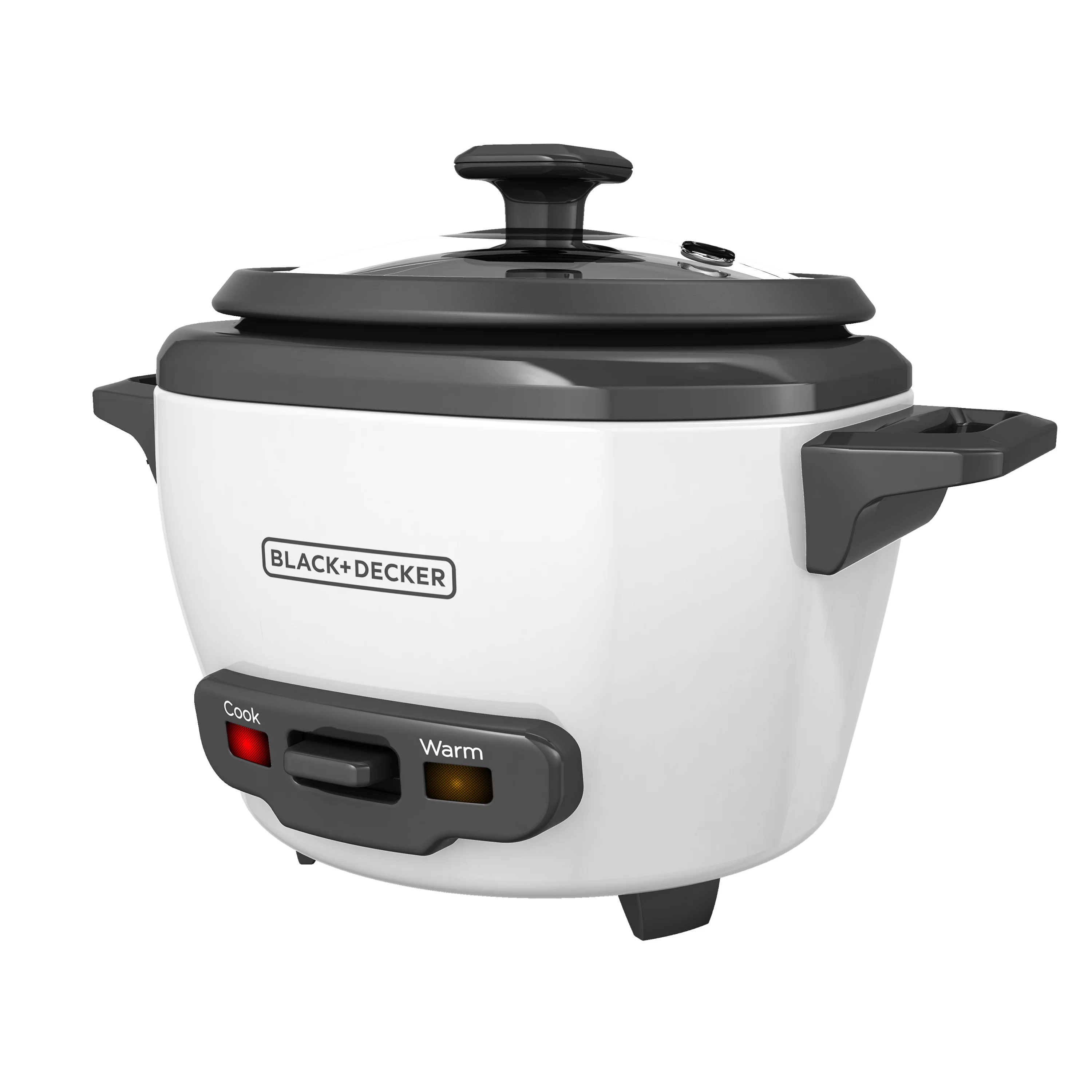
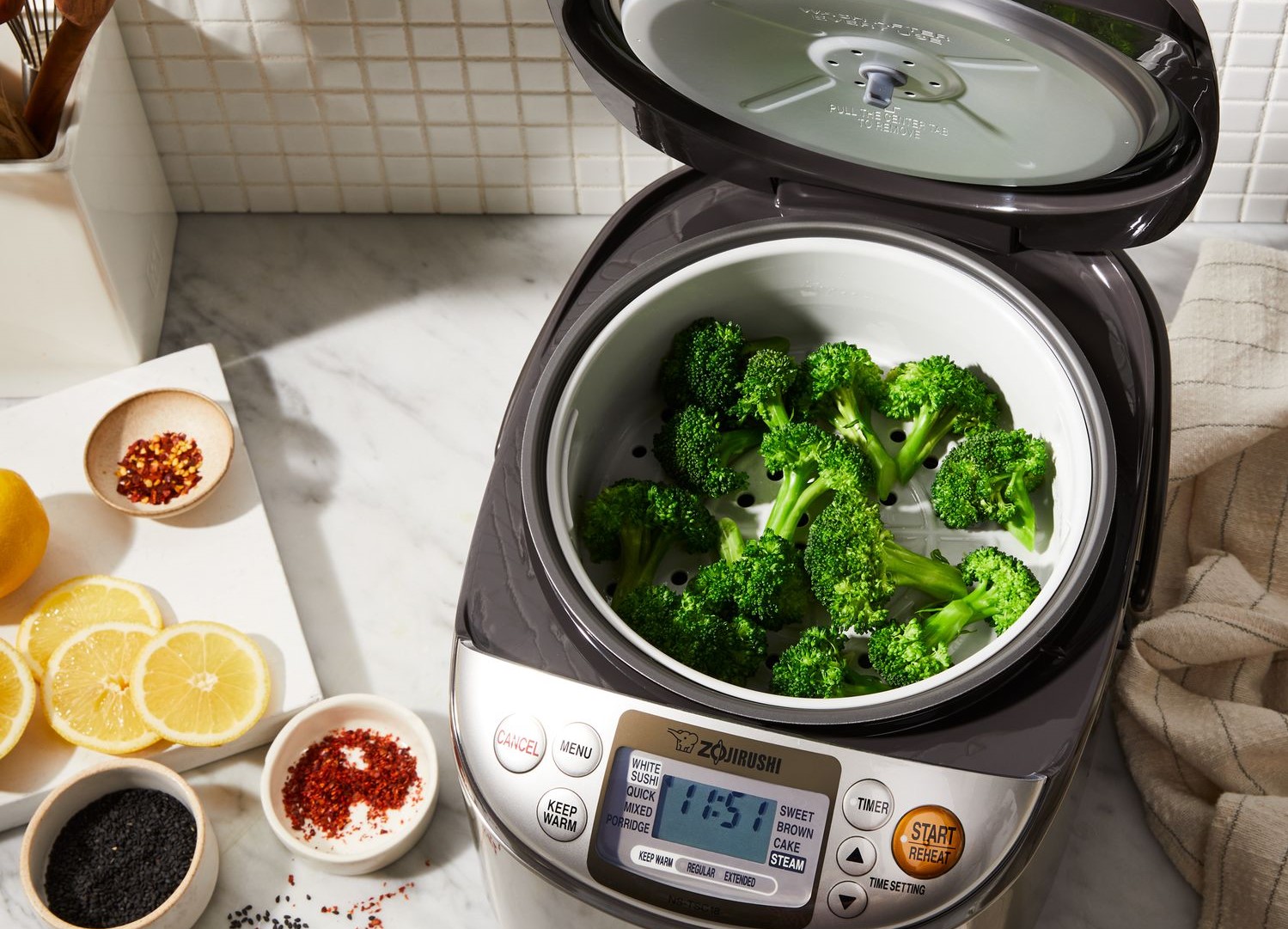
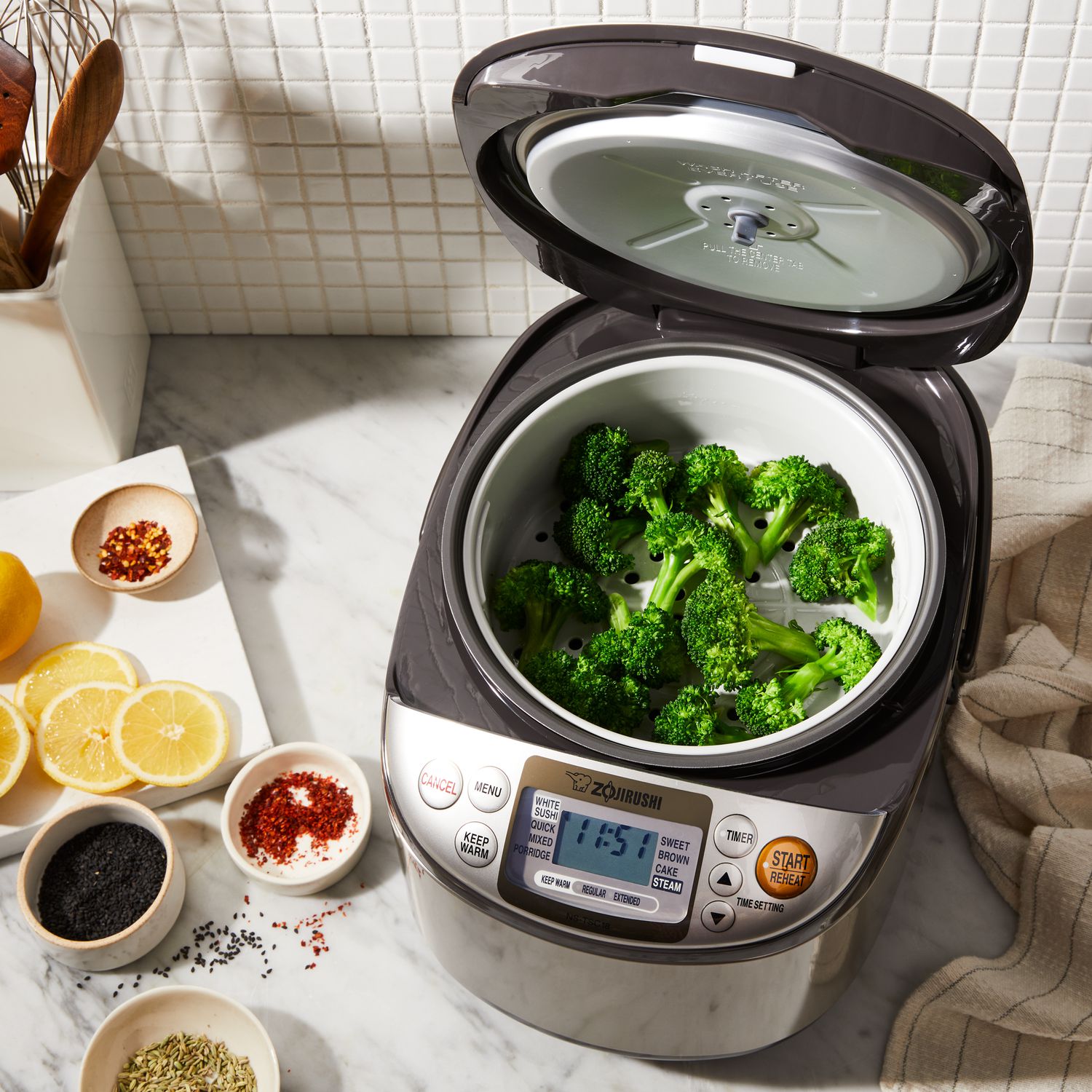
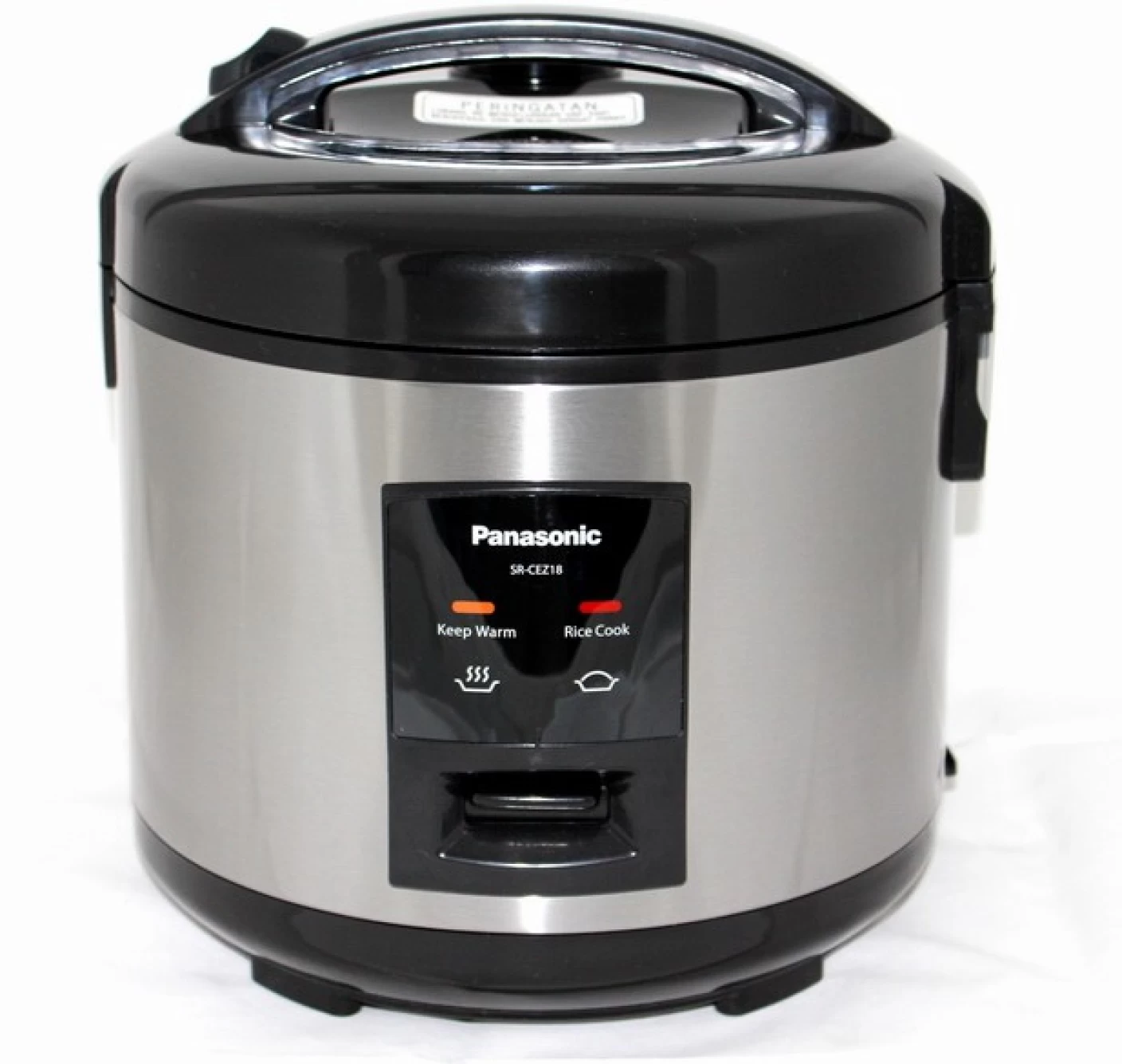
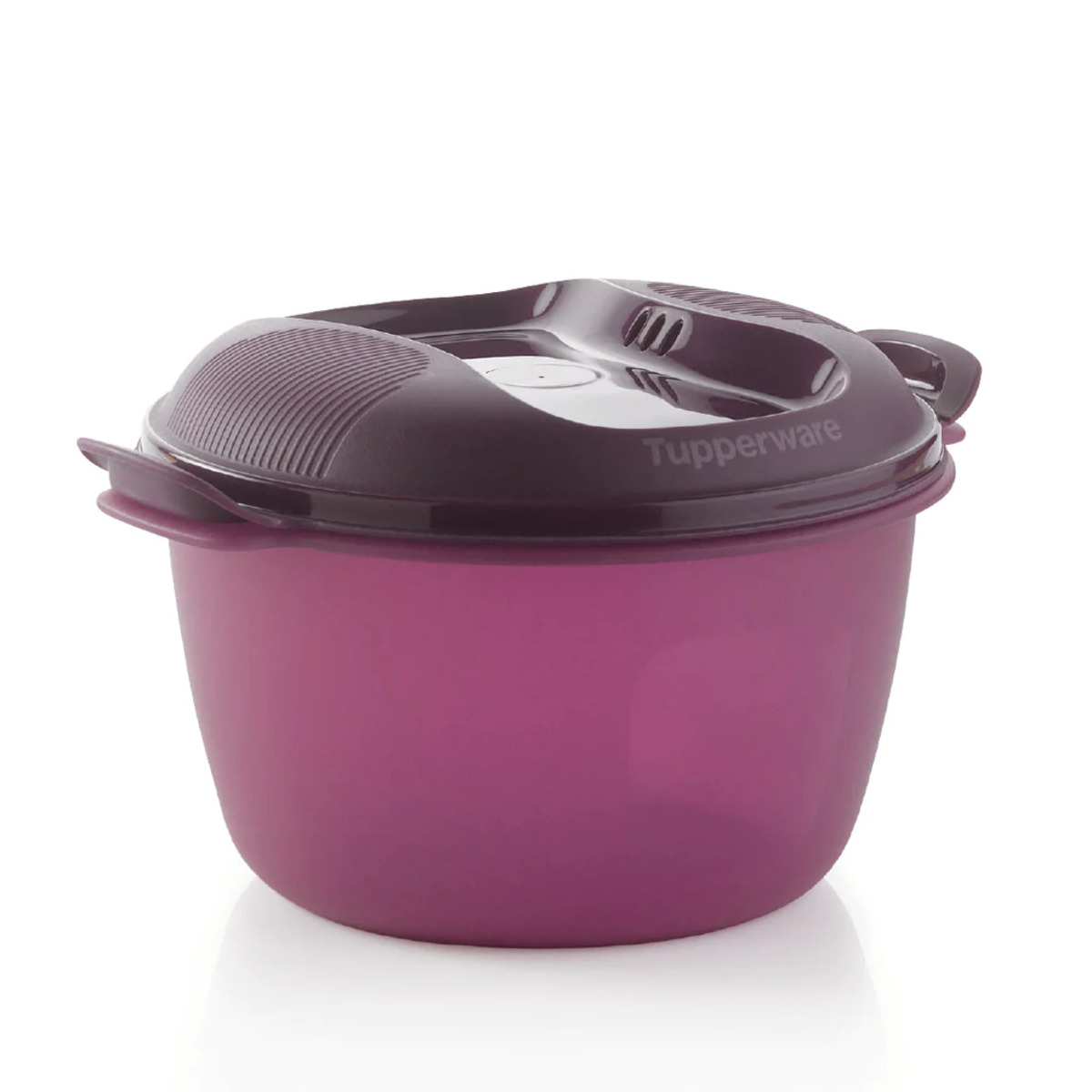
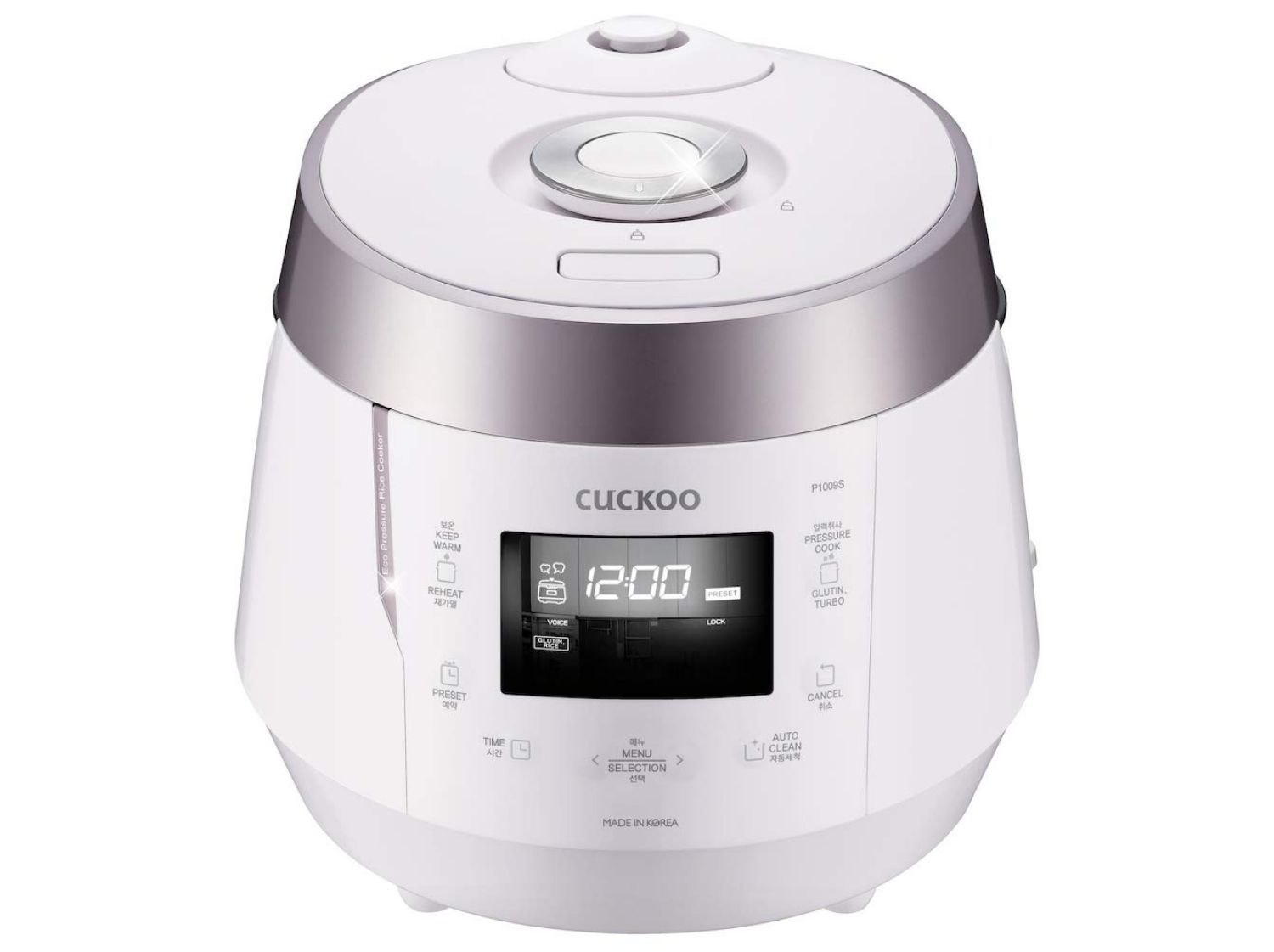
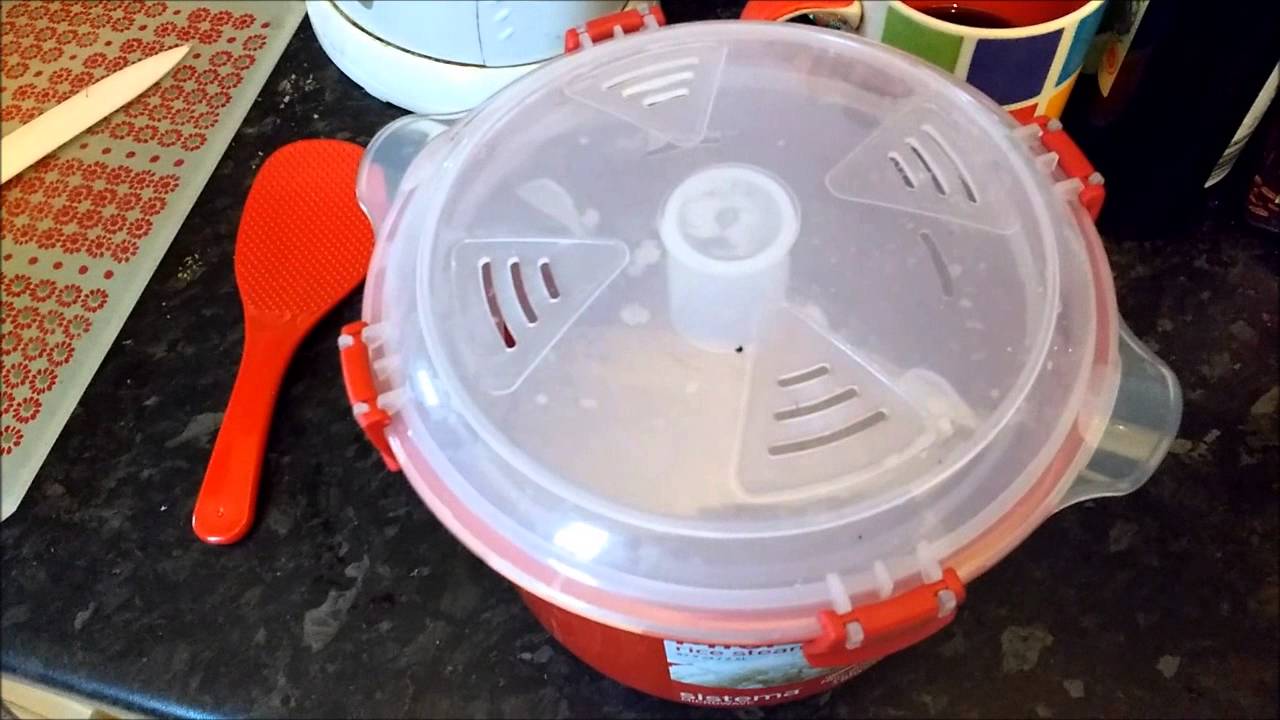
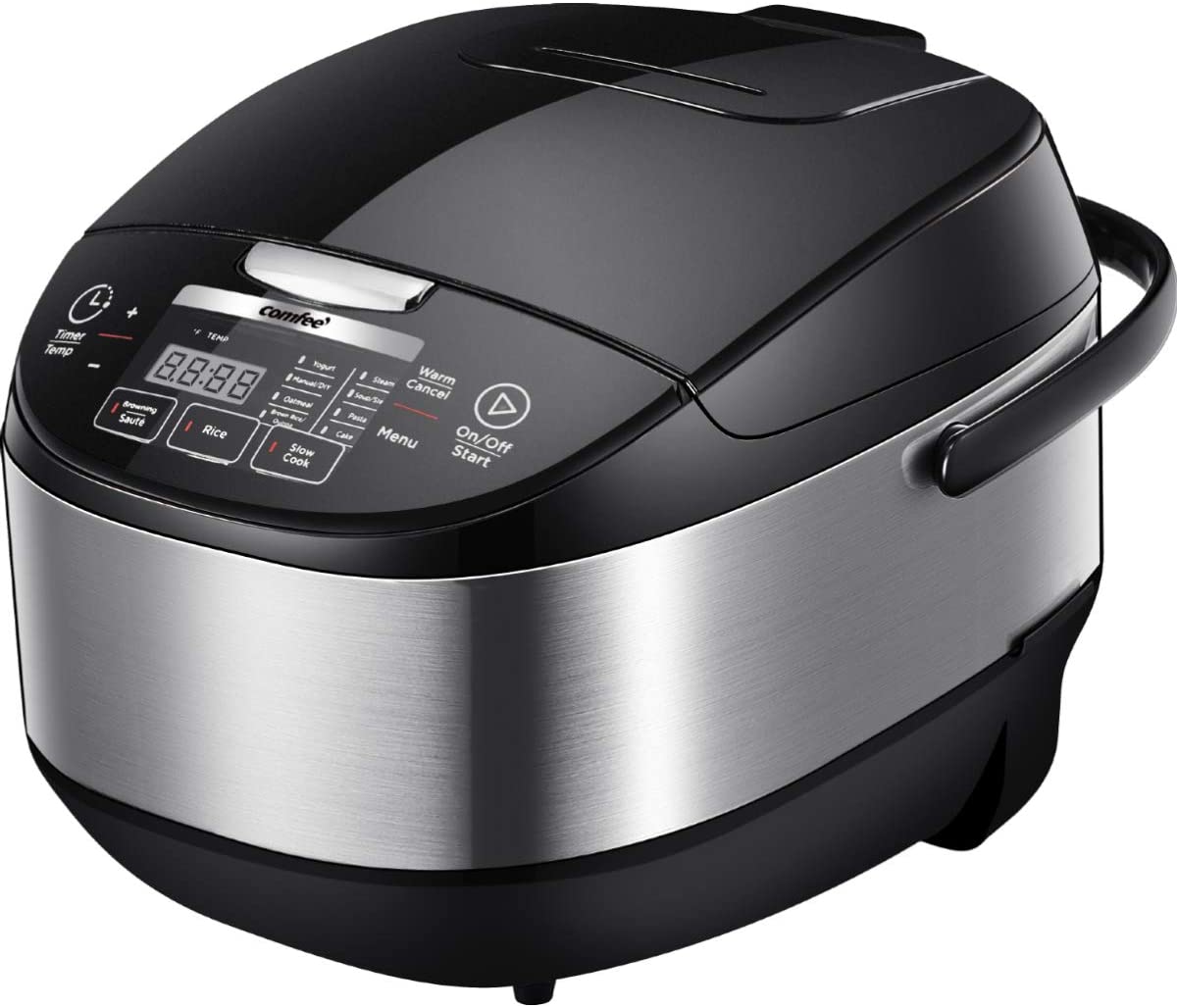
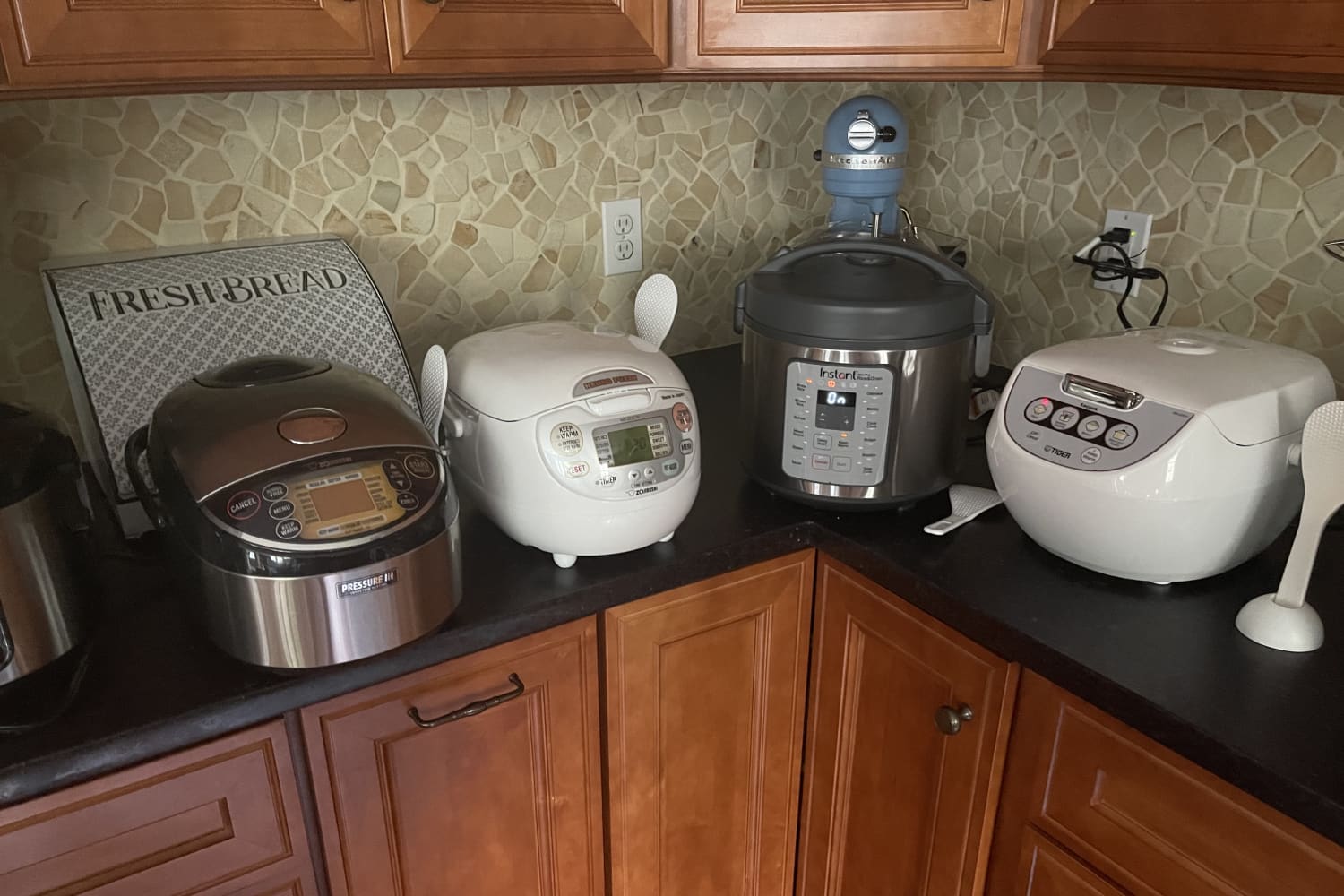
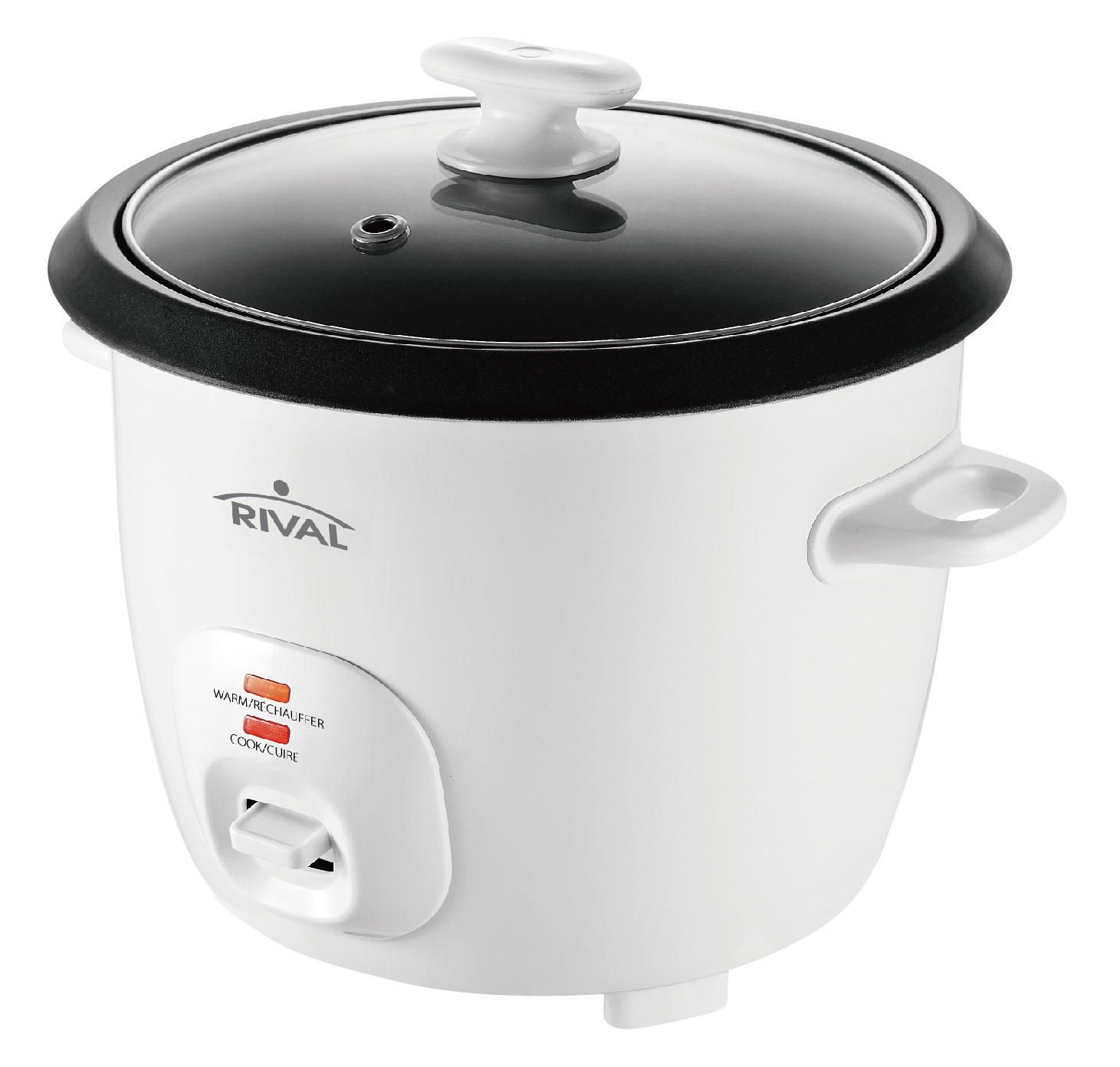
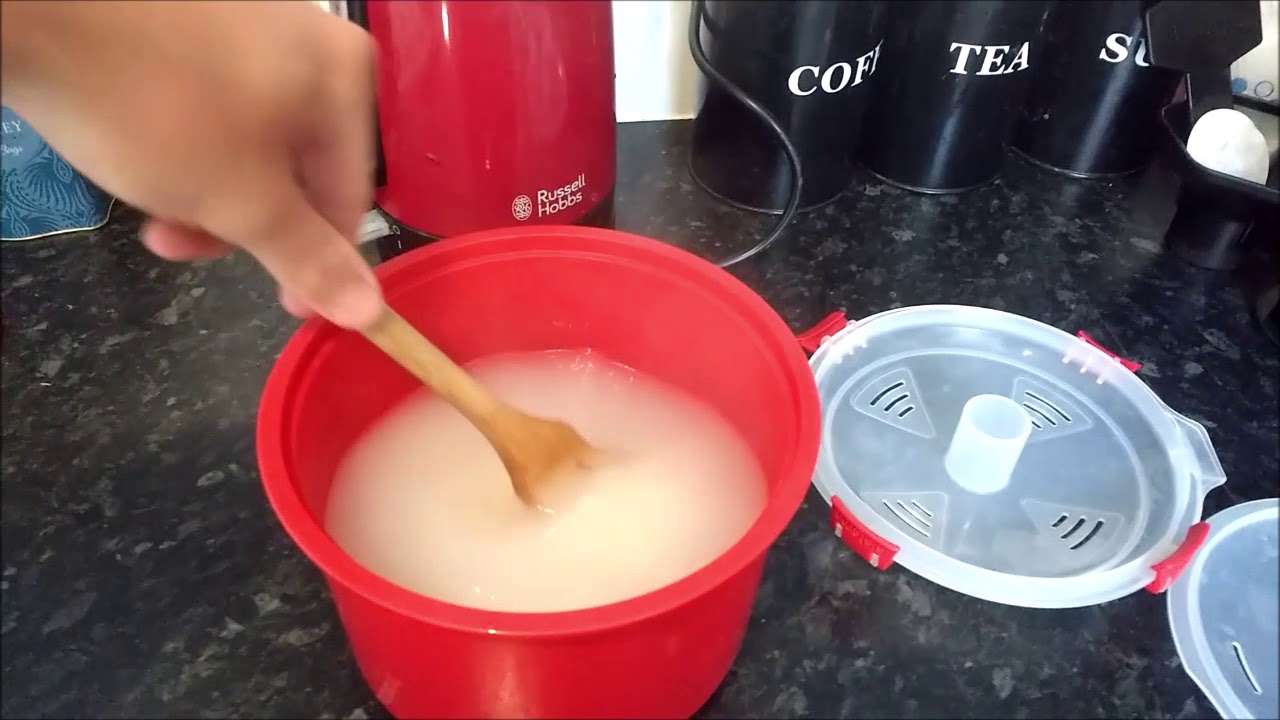
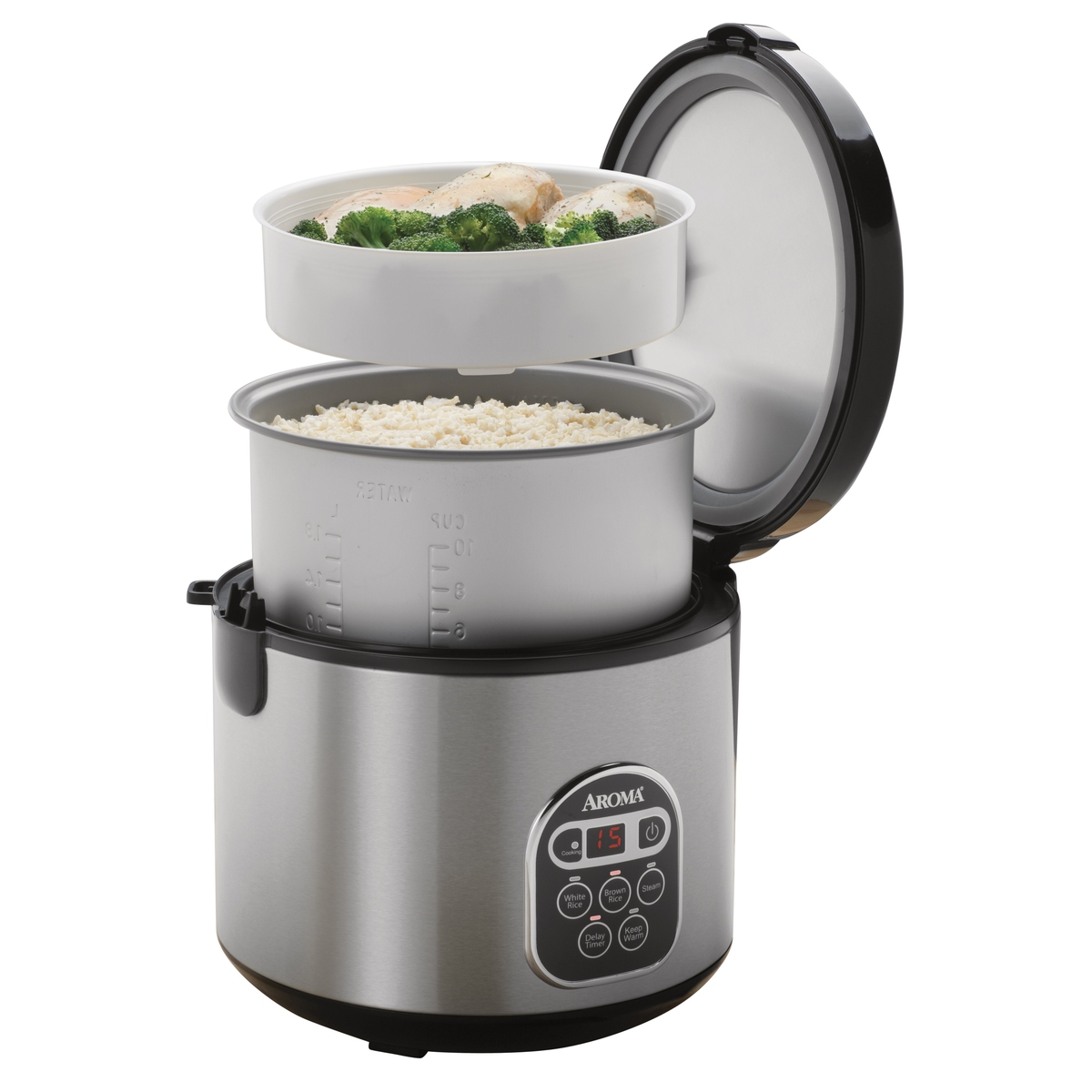
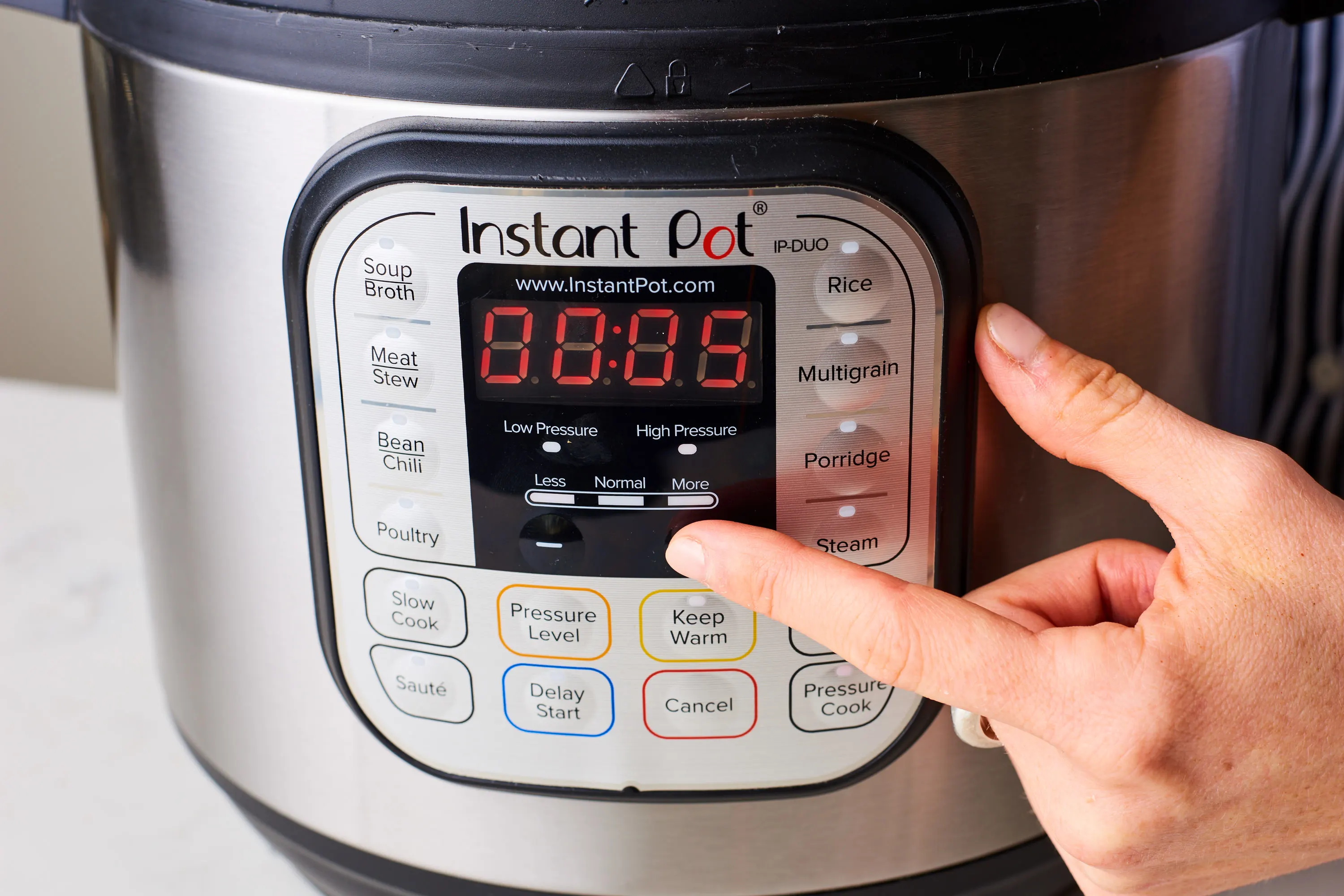

0 thoughts on “How To Use Rice Cooker As A Steamer”